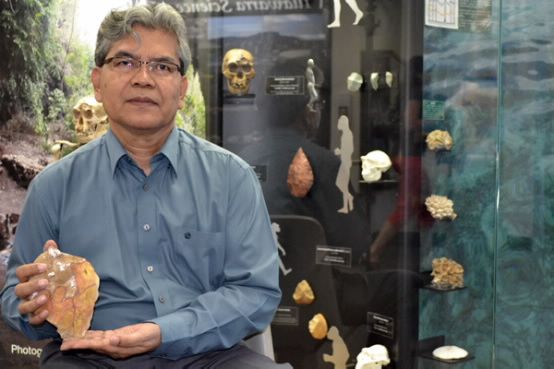
66 Ancient Skeletons Found in Indonesian Cave

Talk about your archaeological jackpots: Researchers in Indonesia have reportedly discovered the 3,000-year-old remains of 66 people in a cave in Sumatra.
"Sixty-six is very strange," Truman Simanjuntak of Jakarta's National Research and Development Center for Archaeology said in a statement. He and his colleagues have never before found that many remains in a single cave, Simanjuntak added.
The cave is known as Harimaru or Tiger Cave, and also contains chicken, dog and pig remains. Thousands of years ago, the Tiger Cave and other limestone caverns nearby were occupied by Indonesia's first farmers. They used the caves to bury their dead, explaining the 3,000-year-old cemetery unearthed by Simanjuntak's team. The ancient farmers also manufactured tools in the caves.
And they apparently made art. Tiger Cave contains the first evidence of rock art from Sumatra, Simanjuntak said. And the cave is only partially excavated.
"There are still occupation traces deeper and deeper in the cave, where we have not excavated yet," he said. "So it means the cave is very promising."
The dates of the discoveries so far peg the cave's occupation to a time when the Earth's entire population was only about 50 million. The Zhou dynasty ruled China, and ancient Egypt's prosperous New Kingdom era, during which Tutankamun riegned, was nearing its end. Though a first for Sumatra, the newly discovered rock art is brand-new by archaeological standards: The oldest rock art known is found in France and dates back 37,000 years.
Follow Stephanie Pappas on Twitter and Google+. Follow us @livescience, Facebook & Google+.
Sign up for the Live Science daily newsletter now
Get the world’s most fascinating discoveries delivered straight to your inbox.

Stephanie Pappas is a contributing writer for Live Science, covering topics ranging from geoscience to archaeology to the human brain and behavior. She was previously a senior writer for Live Science but is now a freelancer based in Denver, Colorado, and regularly contributes to Scientific American and The Monitor, the monthly magazine of the American Psychological Association. Stephanie received a bachelor's degree in psychology from the University of South Carolina and a graduate certificate in science communication from the University of California, Santa Cruz.











